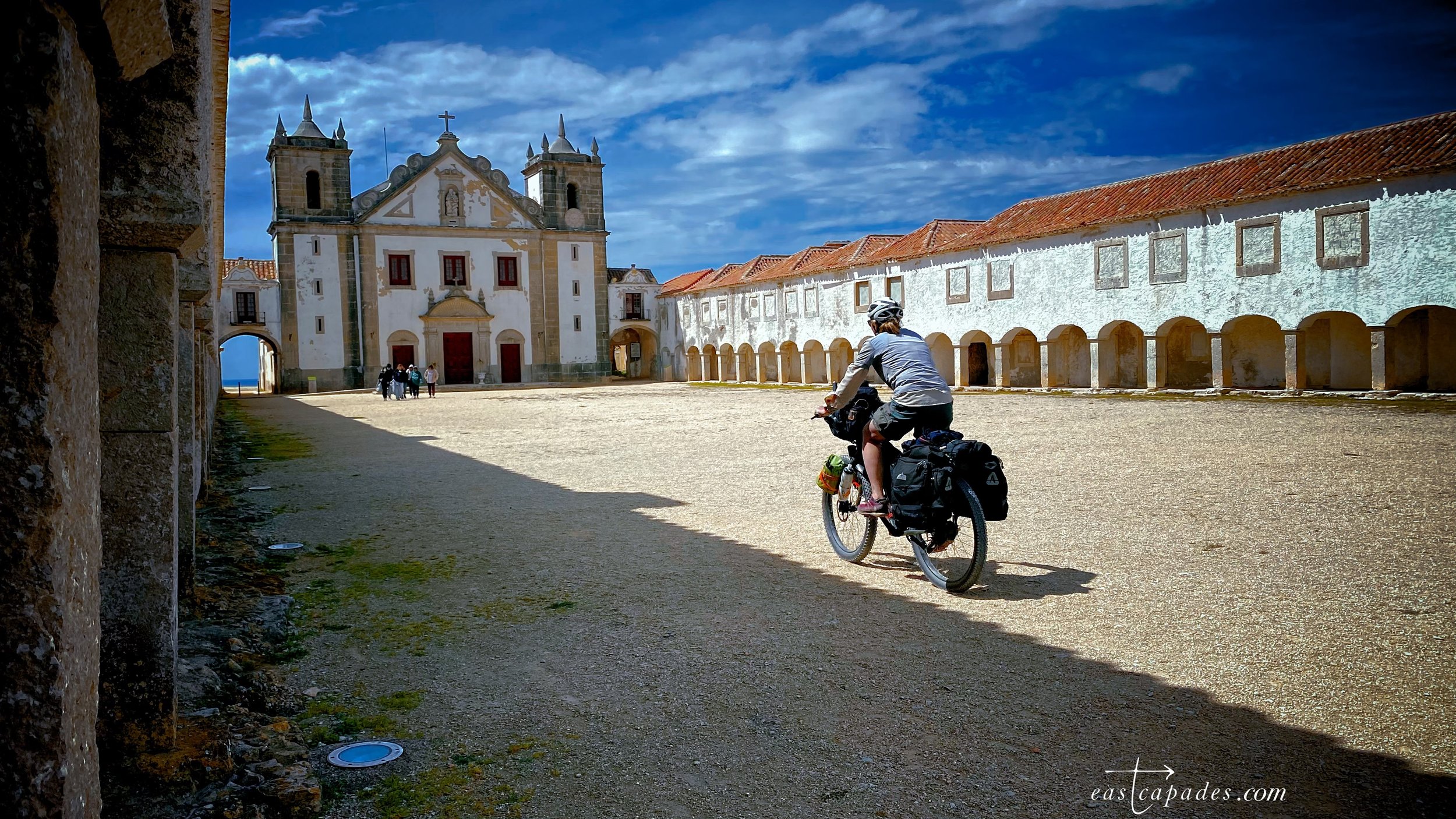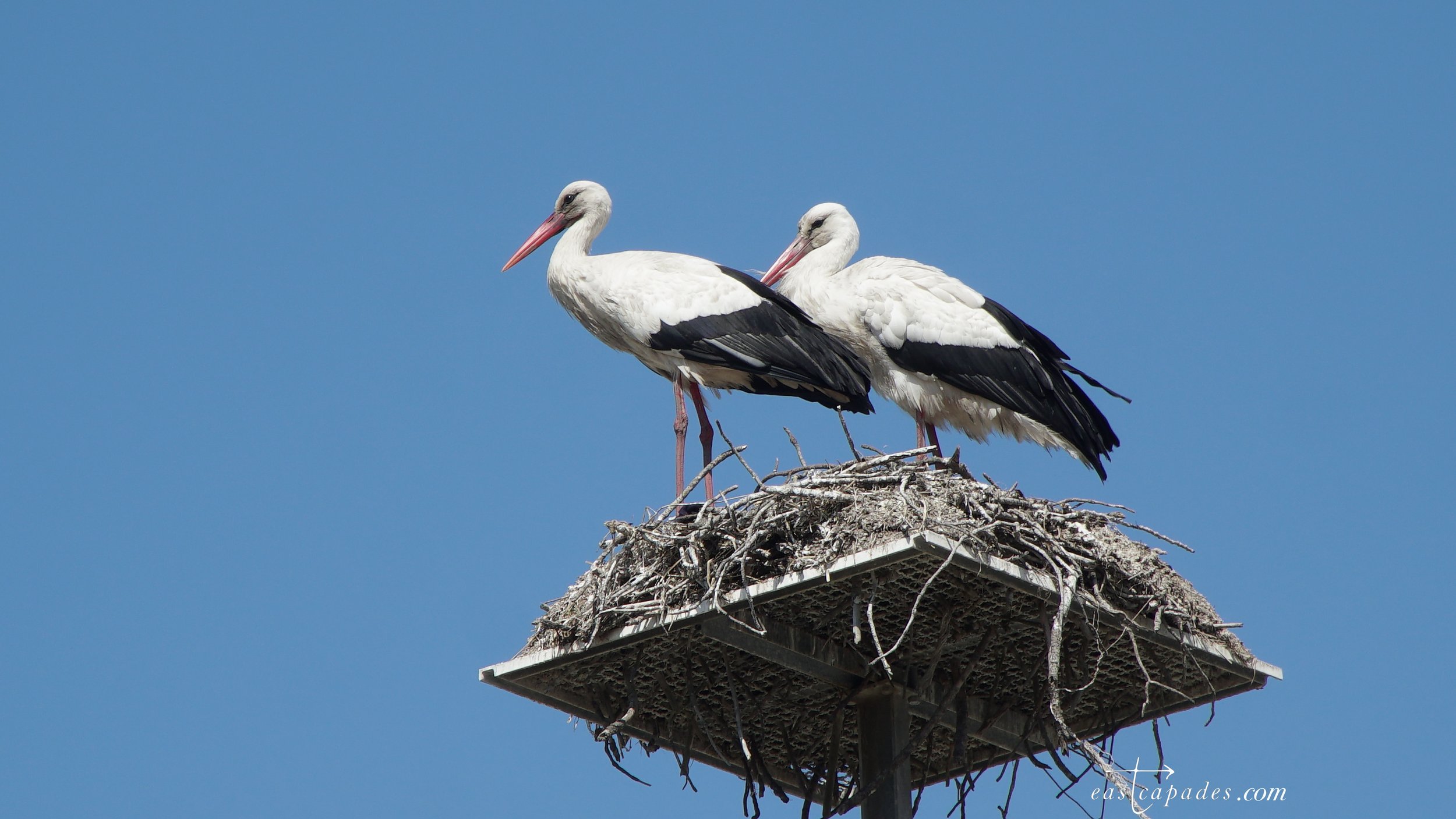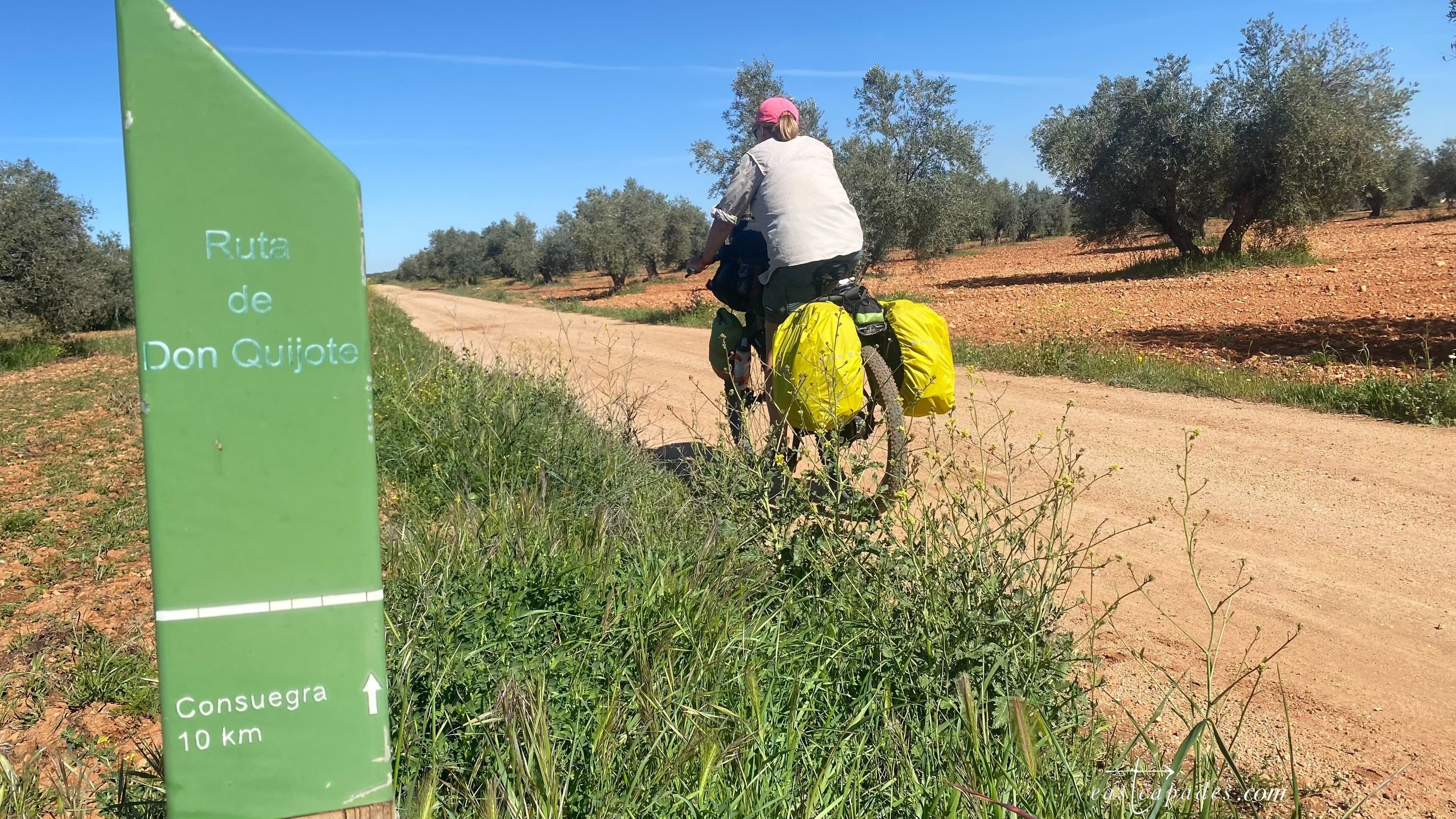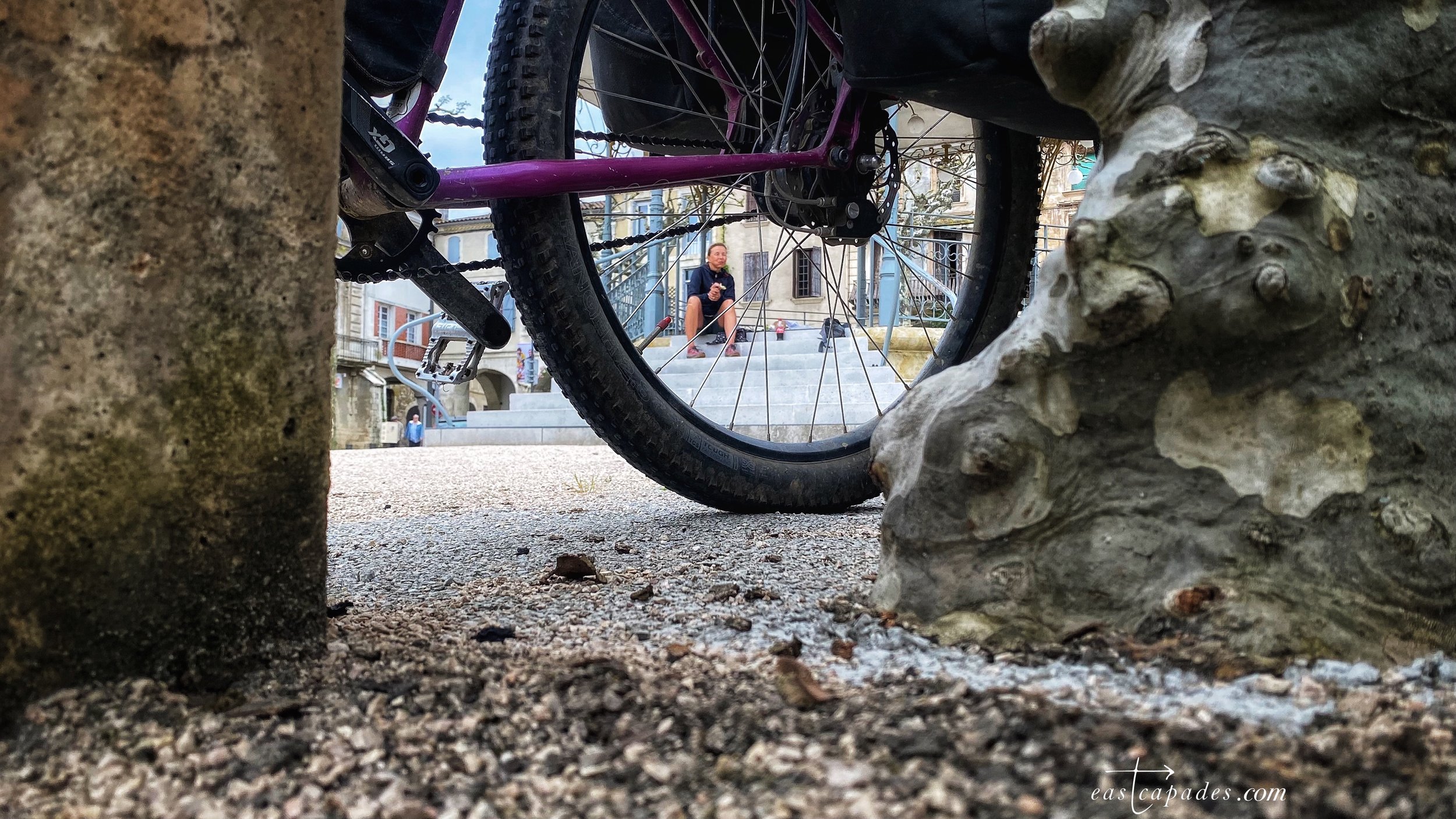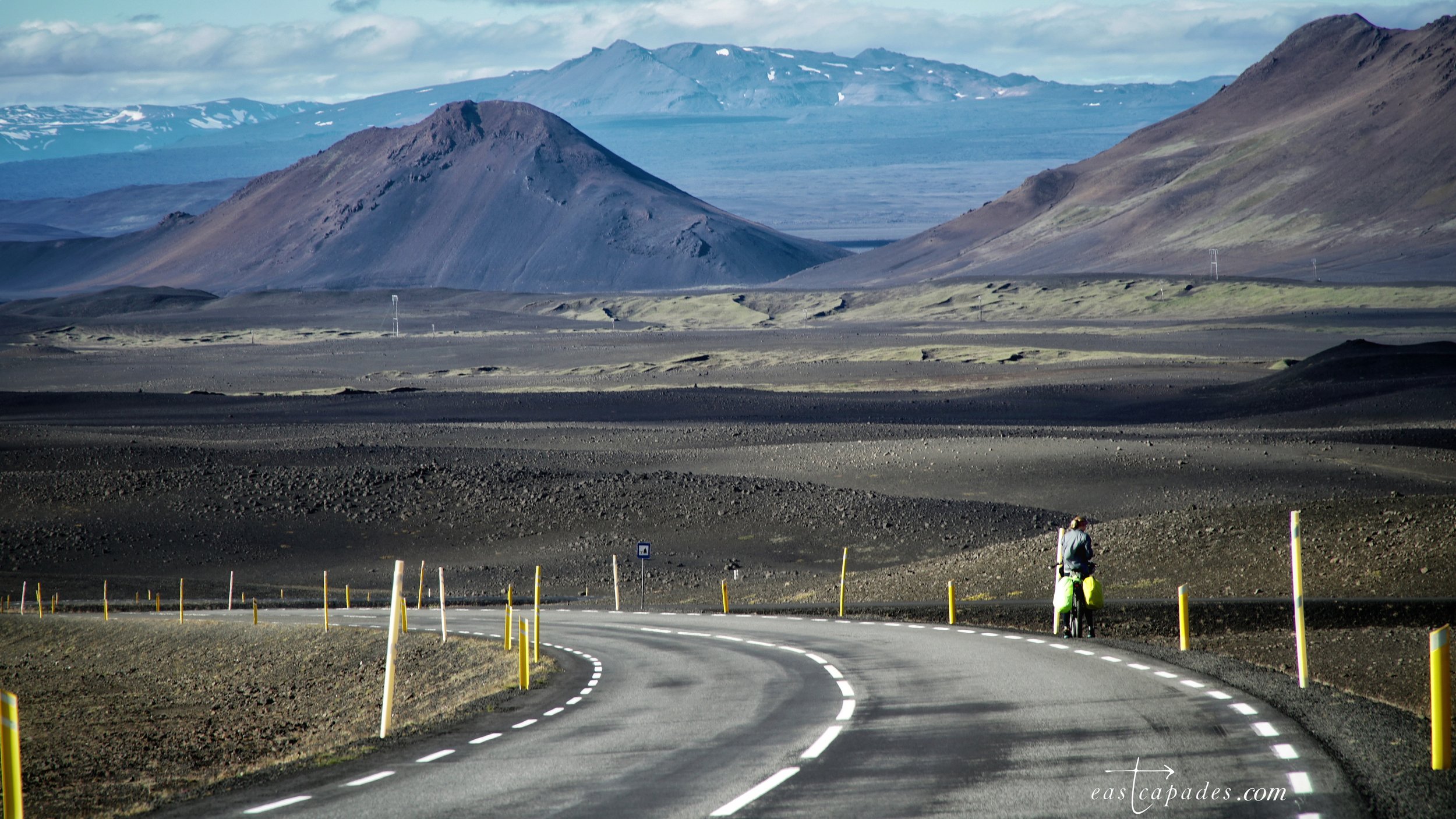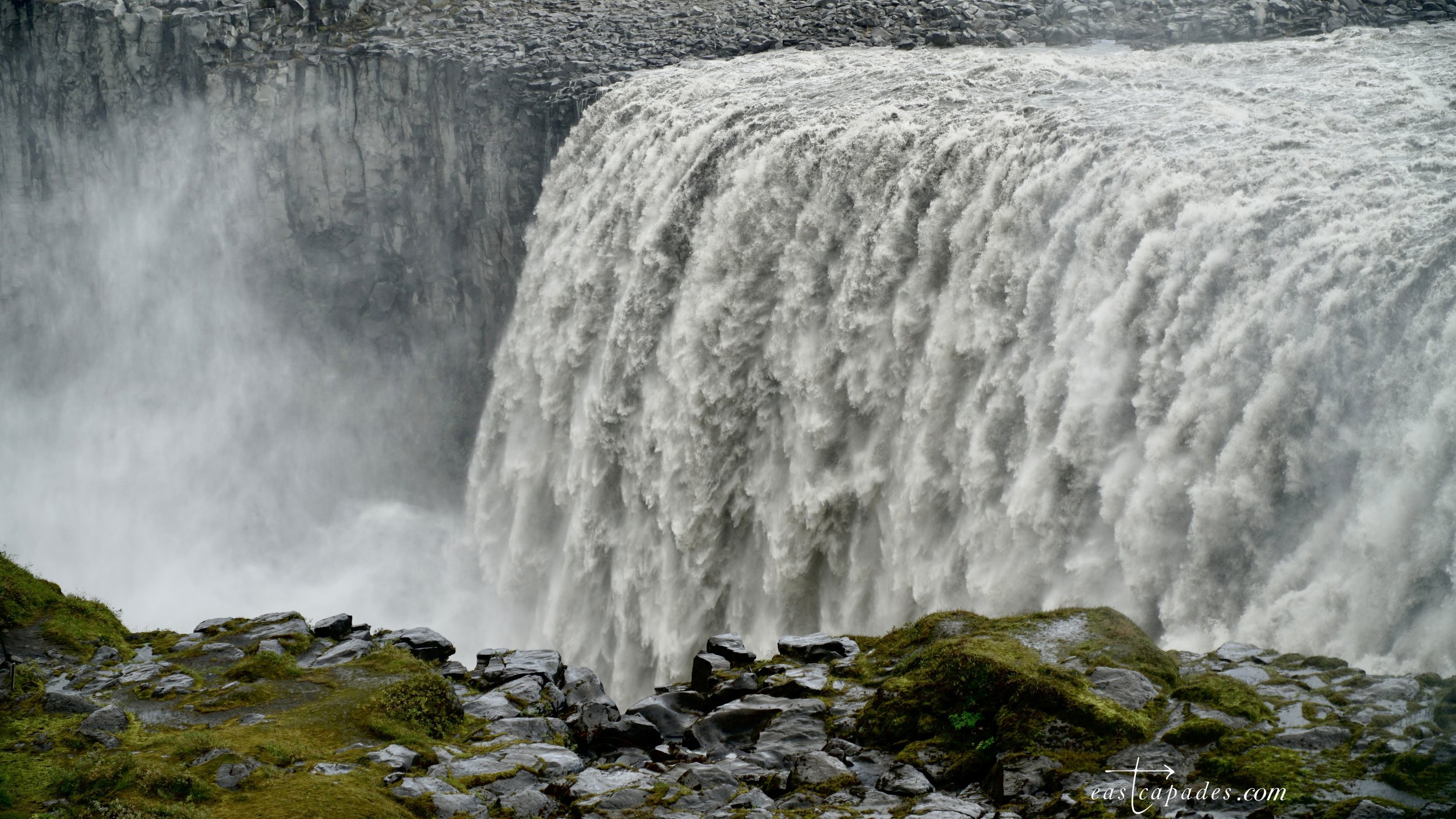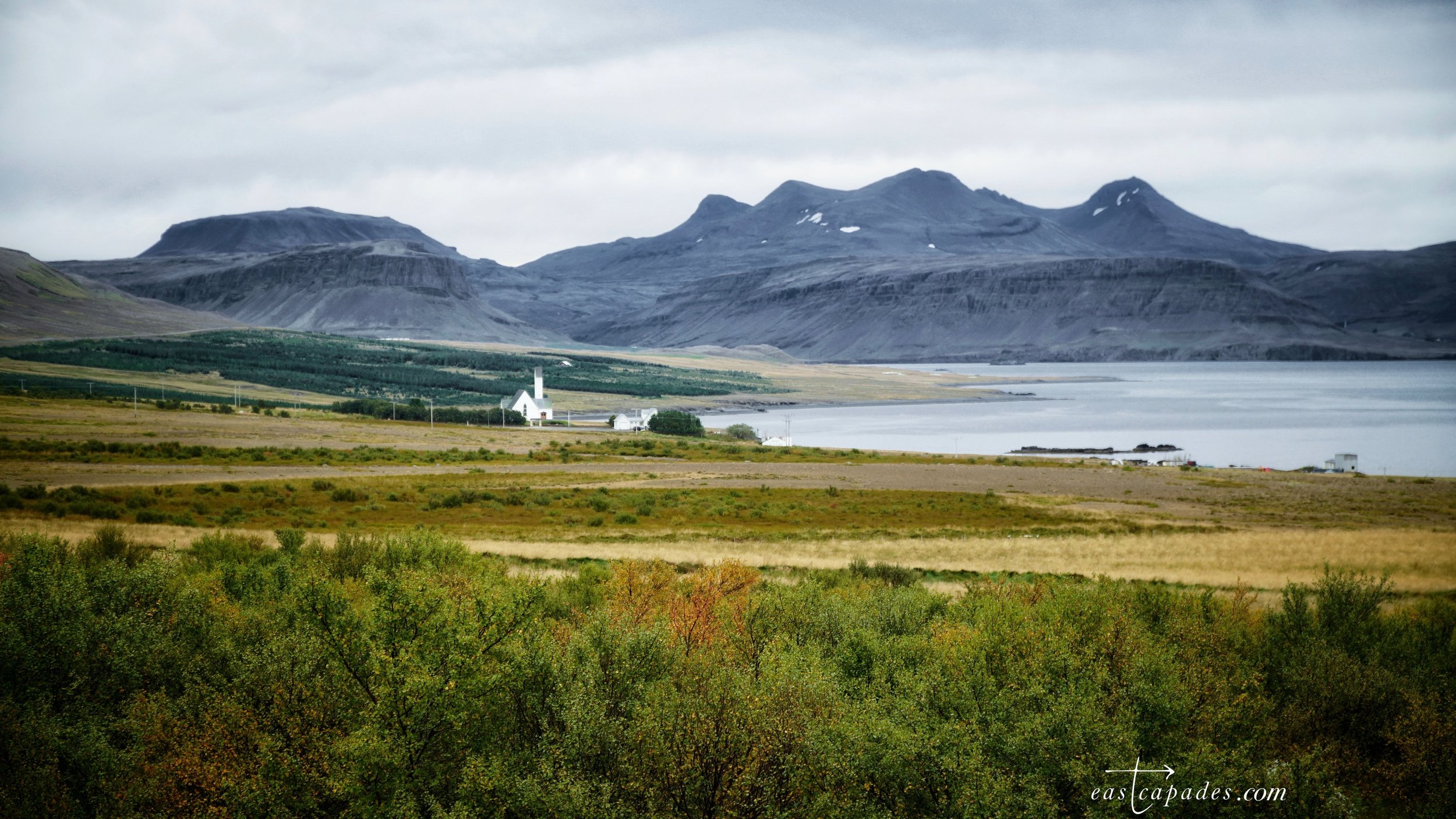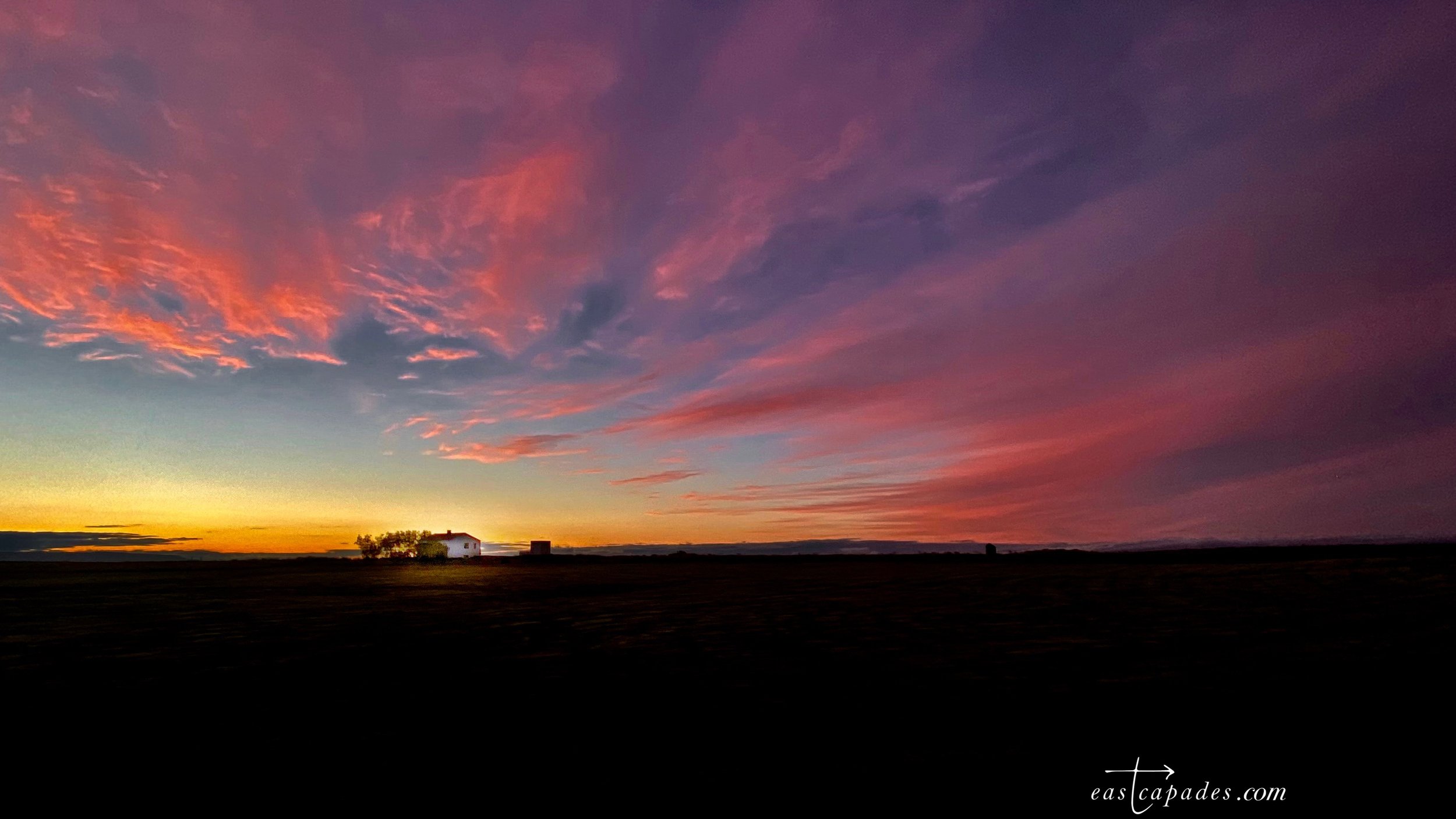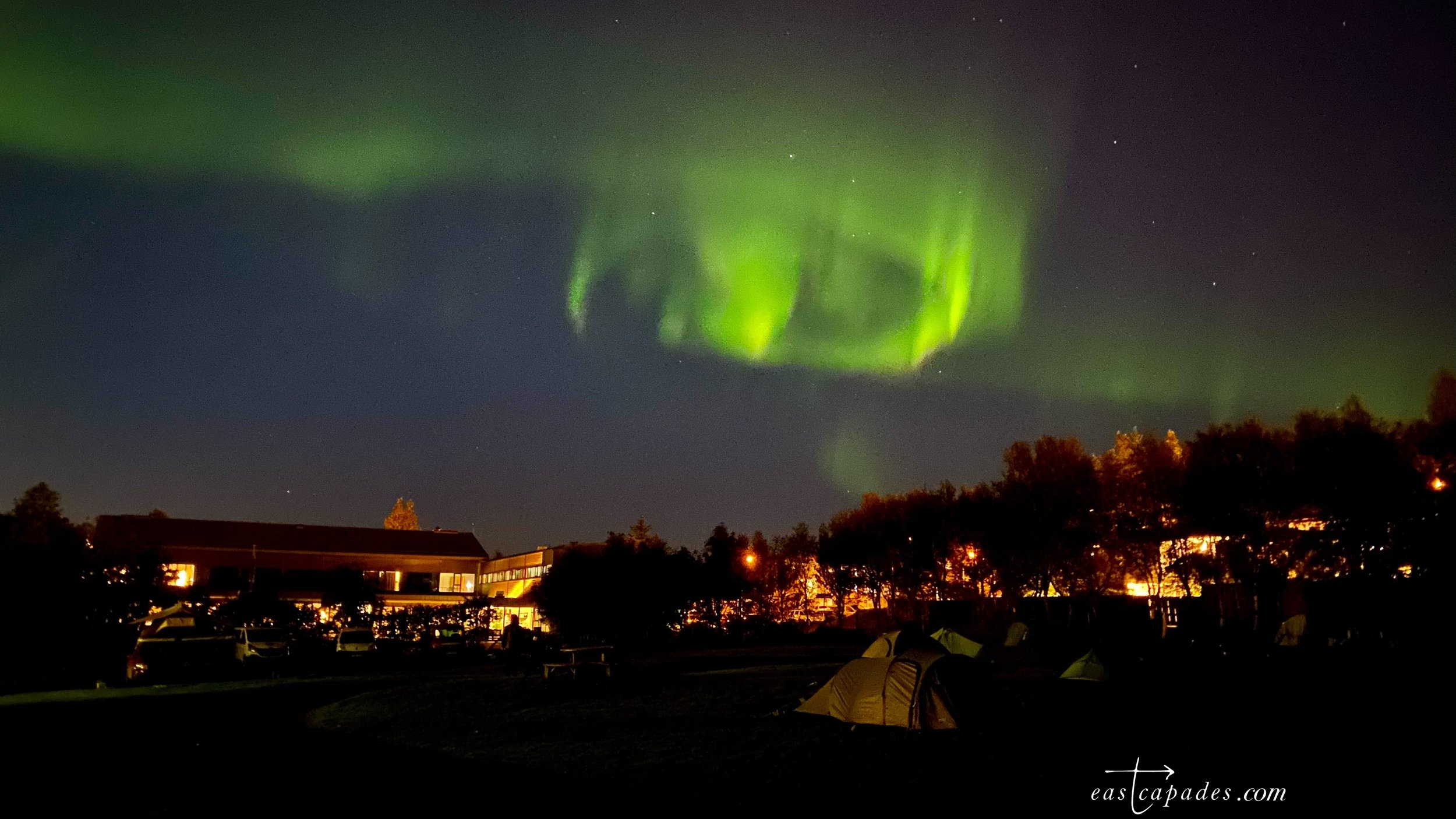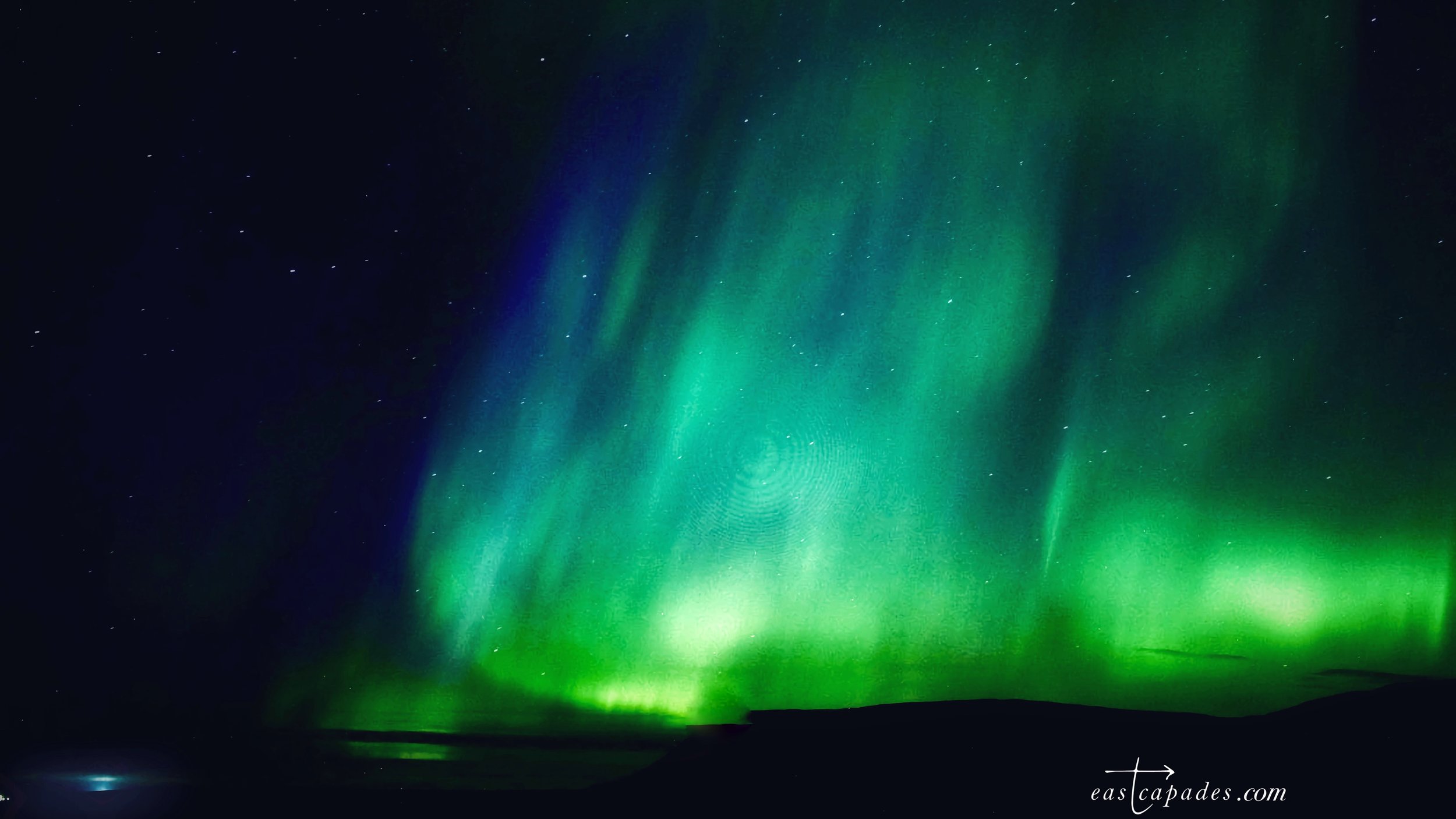challenge
+16240m/-15470m
ROUTE
1740KM
Biking TIME
20 days
off road
379KM
CHAPTER 1
Lisbon, Portugal - Pyrenees, French border [April 1- may 7 2022]
Project: Lisbon to North Cape -Norway- with a return to Vancouver via the Faroe Islands and Iceland in late September.
April 1st , 2022
Portugal 🇵🇹
It is in a park near the city center of Lisbon that we try to adjust to our new local time. Nearly 15c warmer and a sleepless night on the plane from VANCOUVER knocks us out. Despite everything, the reassembly of the bikes done at the airport, allows us to cover the 15Km to our Lisbon Airbnb without any problem and most of the time on a bike path, welcome in Europe (!)
Four days of City visits to soak up the atmosphere and already fall for local specialties to be savoured on terraces in the old Lisbon and we are set up to kick the first pedal strokes of our European journey.
Sylvia, already challenged physiologically during the agitated flight between Toronto and Lisbon, discovers, with clear apparent concerns, the ferry that allows us to cross the Tagus River, a natural city limit. The river, born in eastern Spain, ends in the Atlantic in Lisbon after more than 1000km across the Iberian Peninsula. The rusty passenger ferry must be a few decades old and does not seem to be fit for the rough water offered today. 20 minutes of ferry and we get back on firm land without having to use the sick bags. Our journey through Europe can finally begin.
It is along the Atlantic coast that we trace our route. Favoring small roads and sandy country-side paths, we spend our first days almost without any traffic. Just concerned by the strong headwind which forces us to adopt right away the rhythm specific to long bike journeys. The villages with their white houses can be seen from afar in the landscape of fields coloured by a multitude of wildflowers. White houses with always a touch of blue framed windows and doors have replaced the ceramic facades that are characteristic of Lisbon. Wind and heat surprise us but the route takes shape with a rather flat profile. Villages are excuses for coffee stops and culinary tastes of local specialties. We are at the beginning of April, everything seems surprisingly quiet and apart from elderly locals, a lack of human souls leaves us with a feeling of seasonal vacation locations. Only storks standing on top of electric posts or nesting dedicated poles, are keeping an eye on us like local CCTV.
Wild camping is very easy, the problem is to be able to refuel in food and to anticipate the necessary water supplies for cooking and rehydrating as creeks are rare and grocery stores are either closed for the season (!?) or open a few hours a day. We manage to find a multitude of route options which preserve us from the asphalt surfaces but painfully remind us regularly that sand is dominant in the region. Just like during our past biking experiences in the snow, we challenge ourselves to find the best line. And as in the snow, we end up pushing and hiking the bikes
Quickly, energized by the "travel" mood and eased by a route profile without big surprises, "we" (😇) engage ourselves in a game of improvisation in the choice of the daily itinerary. According to the unrolling environment or simply by a pleasant-looking path which, according to the map, could be a “desired” detour, the route keeps changing in harmony - but not always synced- with the mood. Detours, that very often bring us good surprises or if you want to be said otherwise, “unexpected moments”. Sylvia is now used to these last-minute changes. In the evening or early morning, we review the itinerary imagined earlier during the preparation of the trip, and we make some modifications that seem subtle to us in the early hours of the day. As we leave our night location, we are all prepared for whatever is waiting for us down the road. The day itinerary does not necessarily reflect what will happen during the day but it gives an idea of the distance, the elevations and the estimated time required to arrive at an unknown potential campsite as we give our first pedal strokes.
I must say this is always a liberating feeling to hit the road in the early morning with no real idea of what the day will look like.
Time goes and day after day Sylvia is sharpening her sense of “what to be ready for”. I must confess mistakes or/and bad judgements happen. While in our past long bike journeys it was easy for me to hide them, I have to use now big strategies to dilute them in the daily effort so that they can not be noticed. Often I can see doubts expressed on Sylvia’s face and a little rictus meaning I know what you try to do or ….hide.
The coast South of Lisbon offers some spectacular stretches. Good progresses are done between endless beaches where the Atlantic waves crash and die, landscapes of dunes and sandy rock cliffs as natural lookouts. Efforts are ending in frequent good camp spots for unforgettable evenings hypnotized by sunset colours and wide horizons. Never far away from the sandy coastline, our route is winding through green pastures and wheat fields or citrus orchards in full bloom. We cycle in a luxurious fragrance of orange flowers. It is only, when approaching the Algarve coastline, that we remember we are not the only human in the area. Our, so far, pleasant loneliness is now ambushed by busy resorts where mainly elderly and European retirees who, in this time of the year. are enjoying rebated opportunities to escape winter in a cheap and warmer country. The importance of the multiple resorts makes us believe that peak season must be close to a nightmare for those who are looking for quietness. Unfortunately, the example and commercial success of what has been done in the Algarve is giving ideas to more promoters and developers to invade the still virgin West coast of Portugal. Promising friendly green environments to skeptical and concerned locals, developers’ projects are already promoted on big billboards. It seems that the battle is lost and soon the littoral will be offered to $$ and speculations on a silver tray.
Yet, the southern coastline, aside from the big resorts, has more historical and cultural interests as we get closer to Spain. A new enjoyable tourism aspect that entertains our cycle touring days. The coast has seen, in the 15 century, the first Portuguese to set off for epic journeys that led them to discover other people and cultures in the often unknown part of the world. Also, monuments and architectures witness traces of Portugal's Arabic past. The mix of culture and history are the highlights of the old core of towns and villages. Not far, at walking distance, rugged coastlines made of sandy beaches stretched on endless coastlines sometimes framed by golden rocky cliffs sculpted by aggressive erosion. Few popular outlooks offer spectacular views and spots to enjoy sunsets before getting back to one of the numerous restaurants or bars for a local dinner. The long days on the saddles are not made for late-night parties, even if they are sometimes very tempting.
Every major town or city has huge networks of bike routes making our way through a “no event”. In big cities like Lisbon, Sines, Lagos, Faro,… the bike paths to cycle around are going far beyond the simple limits of the city and in no time from there, we merge on the Camino Verde networks. They form a real web of bike routes from dirt to gravel, from single tracks to wide trails winding between country fields or forests. Old deactivated railroads, service roads along water channels or under power lines, can easily be connected by short distances on countryside paved roads. When their surfaces are not packed enough for us to maintain a decent pace or if the mood is not there to deal with detours proper to that kind of itineraries, we just need to jump on the never-too-far country road until the next opportunity. Paved or not we are surprised to be surrounded by so many wildflowers painting the scenery with dozen of colours. A paradise for insects and birds, we feel days and nights immersed in nature.
Day by day, hours of daylight increase. Quickly we can enjoy evenings with the familiar burner noise of our multi-fuel stove and wander around our camp before sunset. The ceremony of dinner preparation followed by a cup of tea with a treat ends each day. Time to exchange comments and feelings about the day and talk about the profile of next. Moment of peace, feelings of total freedom.
The first few days are also composed by the need to organize efficiently our panniers. Even after many months on the road in all kinds of conditions, it seems that for each trip, we need a couple of days to settle properly into the trip itself to make our life free of stress. By day 4, we are both back on track. Tasks are naturally shared, and camp is set up in less than 30 minutes with water boiling for the first tea cup. Same in the morning, …alarm is ”On” around 6:45 and by 8 am we give the first pedal strokes after a big breakfast and sometimes a lunch already prepared and packed. Simple routines that avoid friction between us, we are both in charge to make the experience “simply great”.
Soon on the bike I usually take the lead, in charge of the orientation. Both aware of what the day will look like, we start at a gentle pace to gradually reach our cruising pace according to the profile of the day. No odometer, just time to time a quick look at the map on my smartphone stored in my pocket. We do not care, really, about the distance covered, the day destination is usually very approximate. Every 2, or so, hours of effort, if a coffee place shows up along the road, we stop to rest a few minutes, soaking into the moment before getting back on the road for another 2h. At mid-day, the “lunch stop” is longer. We then check the distance covered, and the options for the night - wild camp, camping or, if needed, a cheap accommodation always welcome after a few nights in nature to have a shower and do some laundry. The main “concern” is getting food for the night and breakfast, carrying enough water in case there is no access to water at camp, then around 4 pm….if possible, we stop at an anticipated location to enjoy a long evening with sometimes a walk around camp. All becomes a sort of ritual. Long haulers on a bicycle know how pleasant life can be when everything is going smoothly. The addiction to a stress-free and somewhat under-control existence can quickly become a reality. Even if some days are physically or mentally harder than others,… there is always a tomorrow with its own surprises to shift the mood if need be. With no eye on the watch, odometer or calendar, we are wandering….big contrast with what racing modes are imposing on us. Although, experiences gained from one definitely help with the other but always dissociating racing mode and travel mode must stay in our minds.
And so we are traveling. Portugal is now slowly coming to an end with our first rainy day. We ferry to reach the other side of the Guadiana river, the natural border line running south between Portugal and Spain. We can tell almost right away that we have stepped into another ‘culture”. Nicely coloured by many flower baskets, Ayamonte and its plaza del Toro is our welcoming Spanish town. You can tell, efforts have been made to mark differences on each side of the river. A nice square with few cafes and terraces surrounded by characteristic Spanish architecture is a big “pause” temptation but black clouds, rain and another 25km to a campsite conveniently located close to a supermarket push us to keep moving.
Spain 🇪🇸
The city of Huelva is our first major goal. Like in Portugal we are having fun planning our route through a multitude of trails and recommended bike itineraries. Sometimes adding a ridiculous amount of distance for the sake of riding off pavement. Strawberry fields, orange orchards and cereal fields alternating with a variety of forests, all offering protection from the now-burning sun. It is mid-April and the South of Spain lives up to its reputation, warm and humid, even in this early season. Enjoying a little bit too much a deactivated old railroad winding through fields, we are losing tracks of our main direction forcing us to make a new bearing point at almost 120 degrees towards Huelva. However, the detour was not a waste of effort. On our way, we discover the sad conditions of illegal seasonal workers. They wander discreetly on trails from town to town, farm to farm, in a quest for a job. They settle in camps that look more like refugee camps or slums close to their work zone. A bitter taste of slavery conditions in the middle of Europe.
When finally the city is in sight, the wide Rio Odliel delta needs to be crossed by a bridge. A bridge that is today under renovation. Only one lane of car traffic exclusively is open. A ferry 20 km further is the only option left to cyclists. (!!). It is close to 30c, mid-day and we covered already much more than necessary in our euphoric moment on the trail. The “STOP” emergency attitude, Stop-Think-Observe-Plan, becomes applicable as we make our lunch on a bench shared between shade and full sun. A decision is taken. We hold our breath and pass the construction sign clearly limiting access to one-way traffic… an opposite traffic. In Spain, it is culturally a necessity, to stay put between noon and 4 pm because of the heat. We use that opportunity of very low traffic and good visibility of the coming road/traffic on the bridge to break the law and cycle against the traffic on the road shoulder between the red construction cones. A detailed traffic pattern observation synchronized with a calibrated timing effort takes us to the other side in no time with just one unhappy driver's pair of eyes to be ignored.
From Huelva, we are heading to Sevilla one of the highlands on our Spanish itinerary. As usual, cities to be explored and visited, are opportunities to get some comfort in an Airbnb for a couple of days. Time for laundry, showers, lazy morning after a night in white sheets and …comfortable toilet seats ( well …most of the time). No mention the welcome access to some climatized accommodations to recuperate from the bath of heat experienced during the previous days along with better meal preparation eased by real kitchen facilities contrasting with our multi-fuel stove and single pot.
We usually wait until the last minute to make any booking online. Less choice but better last-minute rates are matching our limited travel budget, most of the time. Camping - wild or not - allows one to stay on track money-wise. While Portugal, like Spain, gives us big saving margins on the daily money spent, we arrive in Sevilla right at the time of the Semana Santa. The biggest and insanely popular Christian Week. Hundred of thousands of people are coming to celebrate Easter week. Parades, cortèges, and ceremonies all related to Christianity and the entire city core is closed to traffic. Streets and boulevards were flooded by rivers of perfumed human beings in their nicest outfits and getups. Unexpected timing and astonishing contemplation of a still very vivid Catholicism left us somehow perplexed.
Sweating abundantly we make our way during two days through the crowd to get some glances of the event. Rather than celebrating Easter with Bunny Rabbits and Chocolate eggs hunts, the 7 days of street effervescence, Catholic exuberance are a big eye-opener. To experience once in your life, …maybe. Yet, Sevilla deserves a couple of days to discover its rich history and admire the stunning architecture. A ‘not be disappointing’ 3 days if you can pick the right time to avoid the summer furnace well-deserved reputation and … the Santa Semana week.
At the hottest part of the day, a few people wandering in the streets are fighting for each square meter of shade. Tourists essentially, locals are napping inside until cooler later afternoon.
Camino Verde route networks lead us to Cordoba. A little disappointment after Sevilla. Maybe, based on its reputation, our expectations were too high. Frustrated also by the business running around touristic sites. Temples, churches, monasteries, … basically everything, mainly associated with religion(s), that is of cultural and architectural interests can be visited, if you do not mind paying big money for entry fees or passes. Eventually, we decide to limit our contemplations from the external edifice architectures since the interiors are often a taste of “deja vu”. The Catholic religion, among others, has once, successfully convinced and devoted volunteers to live and die erecting monumental cult sanctuaries as places for faith and devotions. Beauty that should, in return, be freely and fairly offered to the next generations to be enjoyed without having to dig deep in the wallet. We decide to skip touristic traps, preferring the more exciting, although not referenced as “must be seen”, monuments in small villages with the help of local, sometimes improvised, guides fed by the pride of their local heritage. Gladly, well-deserved tips are left hand to hand for the share of their knowledge and enthusiasm. Money ends in the right pocket.
Our route is now heading North for a long Spain traverses towards the Pyrenees and France. We are leaving the Andalucia, its endless landscapes of olive and pistachio trees. On our way, Toledo is an exciting surprise. Nested on the top of a steep hill inside a meander of the Tagus river, the ancient city of Toledo is the highlight of Castillo de La Mancha central area of Spain. An area also known through stories of Don Quichote and the windmills. The rich architectural pedestrian city is an open museum for the pleasure of the eyes and for those avid of history. The walled old city is a heritage mix of Medieval Arabic, Jewish, and Christian presences. Cultures often coexisting in peaceful and mutual respect consideration, contrasting with our present times.
Lesson to be learned…
One thing for sure we should have known from past experiences is that, in no way, you want to service or do any mechanics on the bikes when you are in a remote area, far from “civilization” …. Because S..t can happen.
It is a hot day. We are making good progress through the hills and high plateau North of Madrid. Shade is rare in a landscape of endless fields. Around 2 pm, reaching a high point, a low cork oak tree line breaks the monotonous horizons. By chance, the warm temperatures have encouraged us to stop and fill up bottles and bladders with water from a stream crossing at the bottom of the last hill. According to the map and satellite imageries, the landscape will be bare for the next 60km or so where a small town will be a stop for a night and food supplies. We have done already close to 40km under the bright sun. After a quick look at the road profile, we decide to take a break from the road for a snooze under a tree. A light breeze cools down our bodies and our spirit. We will play chicken and camp here to enjoy the afternoon in the shade.
As Sylvia is resting nearby the tent set up, I decide to take advantage of the early stop to adjust breaks and move back the rear wheel in order to tighten the chain. An easy and quick service that has to be done from time to time when you ride a Rolhoff hub.
Hilly sections are more frequent as we get closer to Pamplona, the Capital of Navarra, in the cultural Basque area. Pamplona, the city of the bulls. I was there once to assist and participate in the Bull-running festival. An amazing event from another age where bulls are set free in narrow streets to find their way to the main arena excited by thousand of spectators yelling and cheering chased runners “teasing” the bulls and risking their life with not many escape options. I remember a high level of adrenaline felt by the naive youth arrogance of a 18 years old challenging the bulls racing me. The still vivid souvenir comes to the surface as we walk today quiet narrow pedestrian streets lined with colourful houses. The presence of a couple of universities makes the city very pleasant to explore with good young crowd atmospheres blended with historical interests. A good rest stop for a couple of days before the climb across the Pyrenees.
The gentle rolling scenery of Andalucia is now behind us when we decide to contour a big “patch” on the map…. Madrid. Choices must be done sometimes and, probable repeatable visits of various monuments already seen, plus an endless suburb to cross in and out of the Spanish capital lead us to a more eastern route. A choice that turned out to be boring, especially under 3 torrential rainy days. Effort for the effort to get through it. Soaked and drenched we find shelter under the cover of a gas station. Two hot chocolates and cookies do not warm up our shriveled-soaked bodies. Looking to get back to action with the hope to get warmer, it is with our chins down to the chest and our noses down into our front wheels (easily done with the size of mine!) that we hit the service road rolling along a ditch draining the water from the close Speed Hwy. Service road, we thought we are riding…. Instead, fighting head down the headwind splashing buckets of rain in our eyes, we miss the turn and end up….on the Speedway itself! By the time we realize the mistake, it is too late in that weather conditions and poor visibility to do a U-turn. An endless convoy of trucks overtaken by an endless line of cars makes any escape move too dangerous. On our right, a 2 meters high fence that keeps deers away and a deep ditch, are 2 uncrossable hurdles between us and the Service road “laughing” at us only few meters down. The ride to stay warm becomes a ride to survive. The numerous honking are undoubtedly not made to encourage us but more to send us a clear message “ what the heck these 2 idiots are doing there?”. To make the situation even more “interesting” the Speedway is uphill. Regularly I look over my shoulder to see if Sylvia is still keeping up with me pushing like mad on the pedals to get out of that situation. Alternating checks on Sylvia and on the digital map of my phone for the next and close salvation option, I get mad at Apple for building iPhone’s touch screens confusing my fingertips with raindrops. The screen with the digital map, is responding to rain drops. It is like my entire phone content is celebrating the moment through a fireworks of useless, unrequested files and screens battling their presence to be part of the excitement. After about 15km of uphill sprint, an exit allows us to recover from that improvised Tempo Interval Training session. Alive and un-arrested by police we get off our bikes and the looks on our faces does not need more comments. We are definitely warmed up.
I would like to be able to blame a heat stroke for undermining my capacity to taking the right decision but it would be too easy.
Loosen the wheel and tighten the chain is a many times easy task done in the past. As I tighten back the wheel axle bolt, I realize that the aluminum thread of the Rolhoff system adapter is damaged, actually, he is now smooth, with no thread at all. In other words, the rear wheel is now held by only one bolt. Swearing does not solve anything but does help to express frustration. Sylvia comes to hear the reason…. It is her bike I am working on, after all. Time to think, what Mc Gyver would do and remain Zen. I push the bolt in the hole where it was once screwed and as a smart handyman ( Mc Gyver never picked up the phone 😉) I look for my roll of Duct tape always carry as the best emergency tool. The cell phone coverage shows only one blinking bar on my phone display and we are Friday. Weekends in Spain are sacred, everything is closed. Last night, to be sure, we booked an Airbnb in the next town ( 60km away) for Saturday night to avoid the heavy rain forecasted for Sunday and onward. I txt the owner summarizing the situation and asking for someone, anyone, who could come to pick us up the next day. The day ends up in a deep silence, I am pissed off at myself for that poor judgment and un-necessary risk taken. All night I am debating on how we can get out of here before the rain. Traffic on this country road is almost none. The hilly region means that every climb will be followed by a downhill. Not sure it is really smart to let Sylvia ride with a rear wheel held by Duct tape. In the early morning as we are fixing breakfast…still silence. Sylvia tries hard to calm my frustration. At least it is not raining yet, the situation could be worse. We pack up and walk back to the road. As we start to ride, I stay behind her, both eyes on the wheel. At the first sign of a wobbling wheel, she will be told, hopefully before more drama happens. We move slowly and cautiously. A couple of km done and my phone beeps. Alleluia!
The lady owning the Airbnb txts me. Her English is good enough for her to understand the situation. She owns a little van and can come to meet us on the road. To save her time, we let her know that we keep cycling slowly. After what felt like a long 15km of up and down, the wheel starts to show some weird angle. A txt to our savour with a screenshot of our exact location and we do not have to wait much longer to see her showing up with a big smile. The van is small and tools fill most of it. Yet, we manage to find room for Sylvia’s bike and my panniers. I will meet her at the Airbnb, burning my stress level in a 45km ride covered at race pace with headwind. Even a winter blizzard would not have impacted my relief. We will have to wait an extra day, Monday turning out to be a national holiday (!!), before pushing the door of a hardware store to find exactly the right diameter bolt, long enough to add a nut and definitely lock and secure the wheel. Lesson learned!
Late and abundant snowfalls have left few passes closed so our choice is limited to a lower pass with a day-long climb followed by a very long exciting downhill to St Jean Pieds de Porc just beyond the border. We are in pilgrimage territory. Because of the early season, it is mainly grey hair walkers carrying all sizes/weight backpacks on which hung the famous shell, a symbol of the Chemin de Compostelle AKA “The Trail”. Smiling and/or limping, witnessing their progression let us imagine the level of physical preparation done previously for each of them and so the degree of devotion or motivation. Few did not take any risk and are following the marked trail on electric bikes, undermining the real sense of the experience and annoying many, us included, while riding the climbs with an obvious nonchalant attitude. The gain of altitude causes a drop in temperature and transforms some effortless “riders” into polar expedition leaders dressed with mittens, down jackets and toques while we are sweating our way up in shorts and T-shirts.
One of the worse moment happens when an Electrified pilgrim overtakes us, waving us and commenting on the cold conditions and his fears regarding the worse part remaining with the cold downhill. We reach St Jean Pieds de Porc with no murder to be blamed on us and a nice cold drink as a treat while the “others” order a warm hot chocolate. The lifestyle “à la Française” is welcoming us for our 3rd country to explore….
To be continued…


